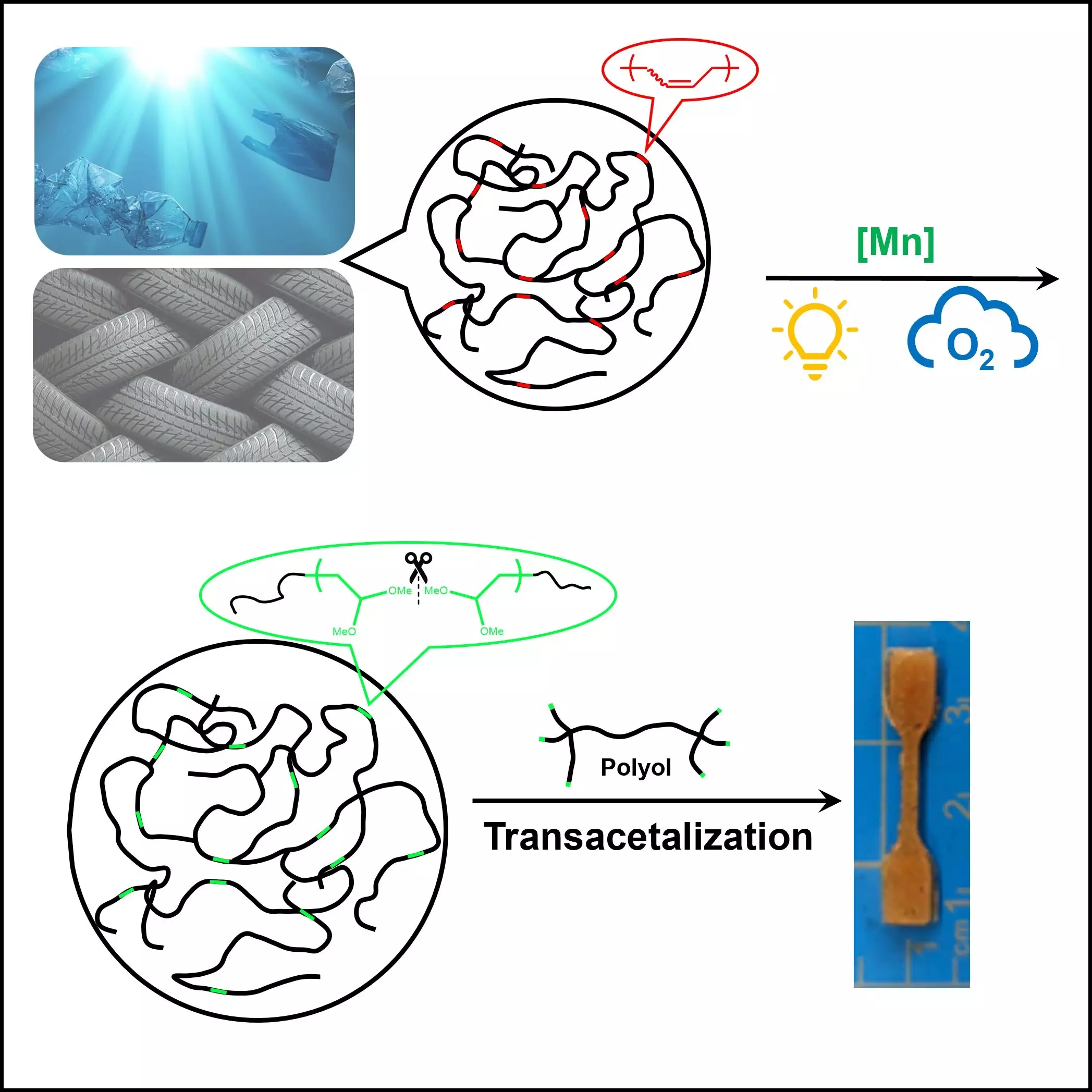In an era where environmental concerns dominate global discourse, innovative research in polymer science is critical. A groundbreaking study led by Dr. Junpeng Wang at The University of Akron sheds light on a revolutionary method for recycling unsaturated polymers such as rubber and plastics. With the staggering figures of 8.3 billion metric tons of polymers produced since the 1950s, much of which ends up in landfills or incinerators, this research could illuminate a path towards a sustainable future.
A Catalyst for Change
The study stands out not only for its ambitious objectives but also for the method it proposes. By utilizing oxygen and light as catalysts, this method aims to efficiently break down polymers at room temperature without the need for harsh conditions or energy-intensive processes that have characterized traditional recycling methods. The team, including accomplished students like Dr. Hanlin Chen and Dr. Devavrat Sathe, appears to have tapped into a gold mine of potential by enhancing the reactivity of these challenging materials.
For decades, conventional recycling methods have grappled with the inherent toughness of polyolefins, which account for a significant percentage of global polymer production. Their notoriously stable hydrocarbon chains have made traditional recycling efforts not just inefficient but often harmful to the environment, creating undesirable by-products in the process. This novel approach attempts to turn that narrative on its head, using natural conditions to promote polymer degradation efficiently.
Overcoming Historical Challenges
The study presents a significant advancement over time-consuming and sometimes toxic methods such as ozonolysis and permanganate oxidation. Previous attempts at oxidizing these polymers often resulted in a slow and cumbersome process, leading to frustration among scientists and environmentalists alike. The introduction of a light-activated catalyst offers a streamlined alternative that advances both speed and control, which are paramount in making recycling a more feasible and attractive option for industries.
Moreover, this research highlights the deep-seated connection between technological innovation and environmental sustainability. To address the global pollution crisis spurred by plastic waste, we need not just better recycling methods, but also a shift in how we perceive waste. Wang and his team’s work reveals that pollution can be seen less as an inevitability and more as a challenge that can be met with ingenuity.
A Call to Action for Industries
As industries face increasing pressure to adopt greener practices, the implications of this research are profound. A scalable solution for recycling unsaturated polymers could drive significant change within production lines, prompting companies to rethink their waste management strategies. The ability to recycle these materials efficiently not only speaks to environmental responsibility but also represents a smart business strategy in an economy that increasingly cherishes sustainability.
This pioneering study by Dr. Wang’s team calls for a collective response from the scientific community and industries worldwide. As we stand at the precipice of an environmental crisis, the choice is clear: adopt innovative technologies that pave the way for a future where recycling is not just an afterthought but an integral part of materials science.


Leave a Reply